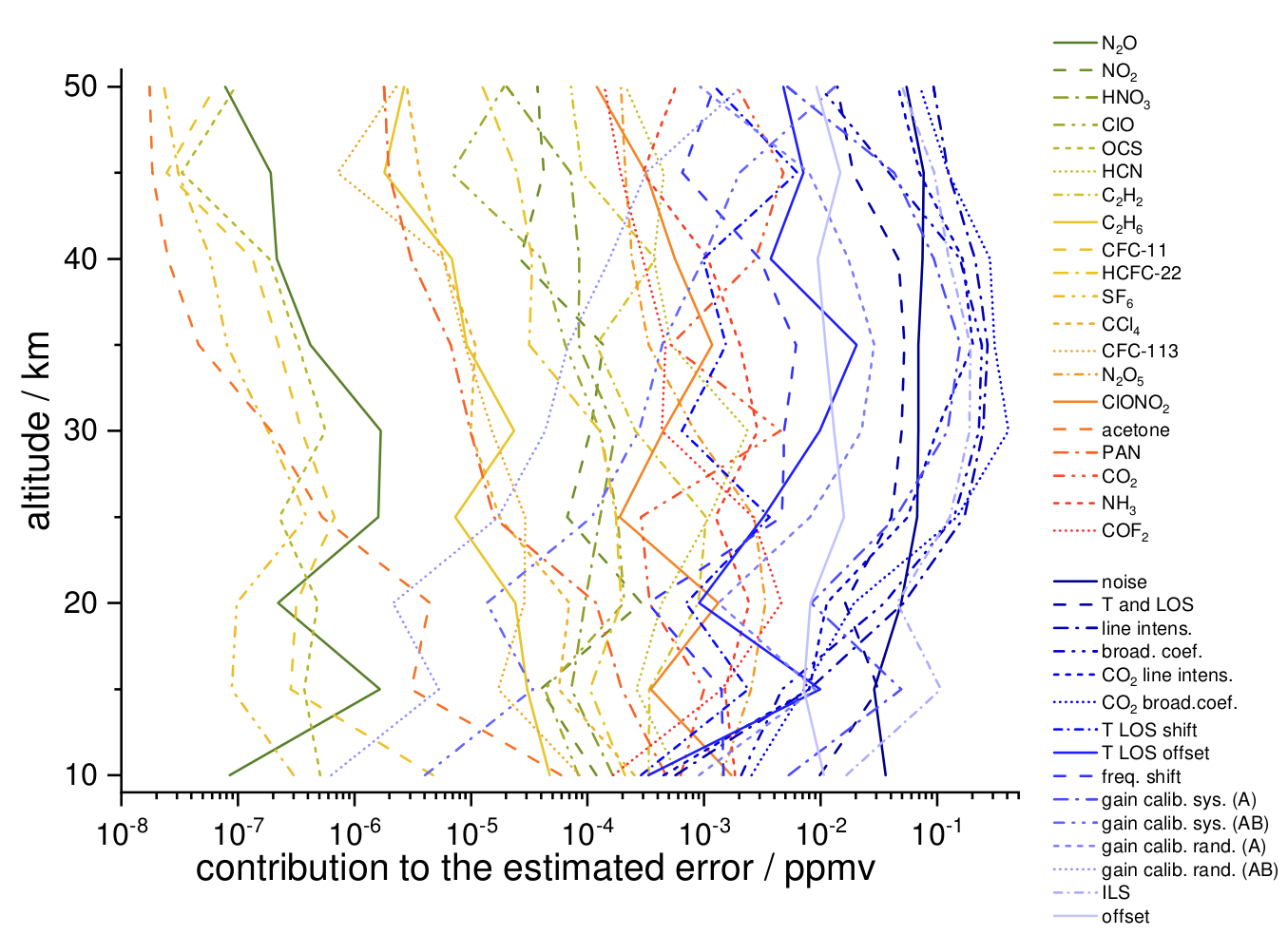The MIPAS V8 Error Budget

The error budget (absolute values) of a MIPAS ozone retrieval from a limb scan recorded at 40.09oN, 11.28oE during Envisat orbit 38517 on 12 July 2009, 21:28 UT. This comprehensive error budget was produced using a methodology described here. They are compliant with the recommendations by the SPARC Activity TUNER.
The paper "TUNER-compliant error estimation for MIPAS" by T. von Clarmann et al. describes the error estimation for temperature and trace gas mixing ratios retrieved from the Michelson Interferometer for Passive Atmospheric Sounding (MIPAS) limb emission spectra. The following error sources are taken into account: measurement noise, propagated temperature and pointing noise, uncertainties of the abundances of spectrally interfering species, instrument line shape errors, and spectroscopic data uncertainties in terms of line intensities and broadening coefficients. Furthermore, both the direct impact of volatile as well as persistent gain calibration uncertainties, offset calibration and spectral calibration uncertainties and their impact through propagated calibration-related temperature and pointing uncertainties are considered. An error source specific to the MIPAS upper atmospheric observation mode is the propagation of the smoothing error crosstalk of the combined NO and temperature retrieval. Whenever non-local thermodynamic equilibrium modelling is used in the retrieval, also related kinetic constants and mixing ratios of species involved in the modelling of populations of excitational states contribute to the error budget. Both generalized Gaussian error propagation and perturbation studies are used to estimate the error components. Error correlations are taken into account. Estimated uncertainties are provided for a multitude of atmospheric conditions. Some error sources were found to contribute both to the random and the systematic component of the total estimated error. The sequential nature of the MIPAS retrievals gives rise to entangled errors. These are caused by error sources that affect the uncertainty of the final data product via multiple pathways, i.e., on the one hand directly, and on the other hand via errors caused in a preceding retrieval step. These errors tend to partly compensate each other. The hard-to-quantify effect of the horizontally non-homogeneous atmosphere and unknown error correlations of spectroscopic data are considered as the major limitations of the MIPAS error estimation.
